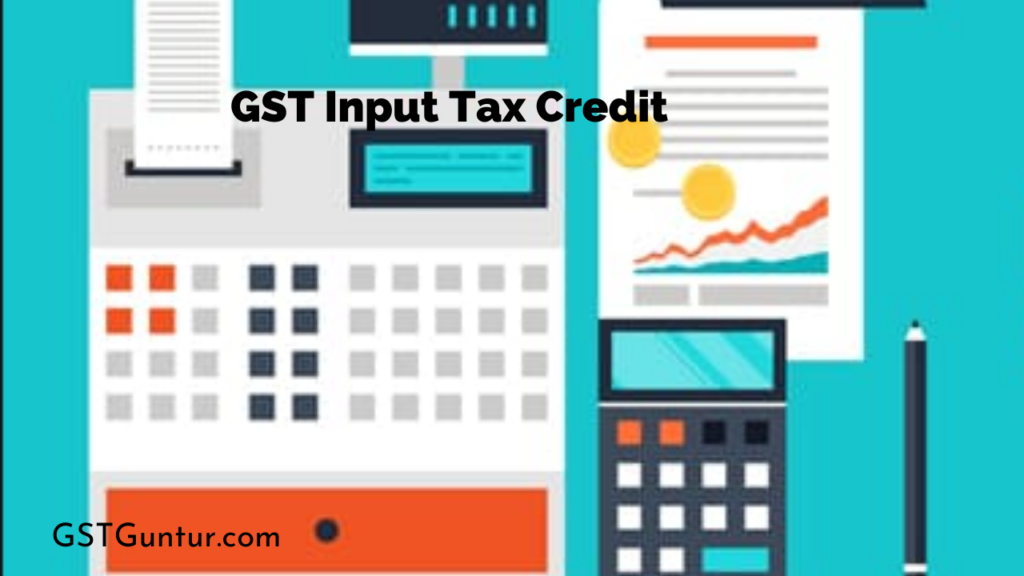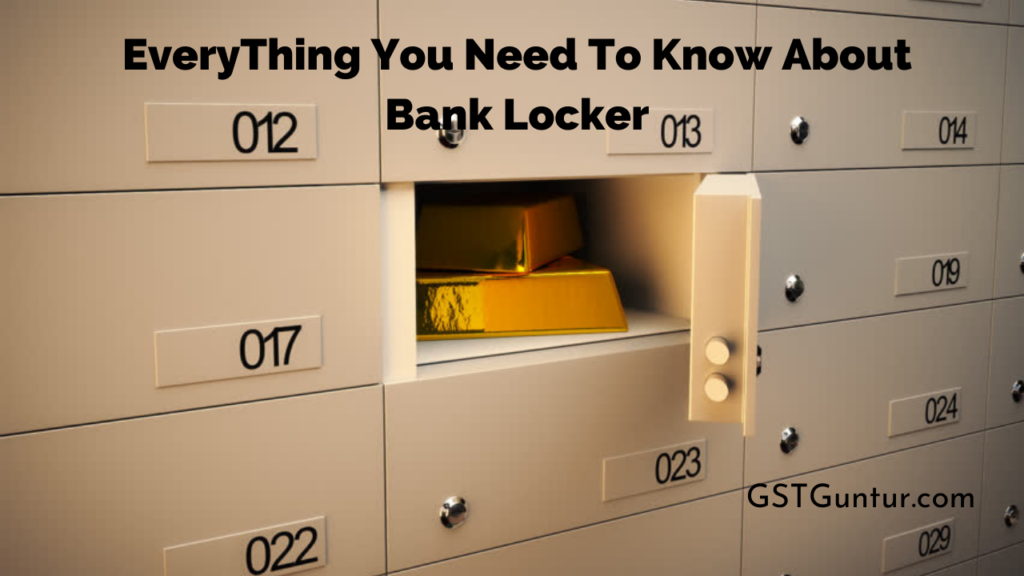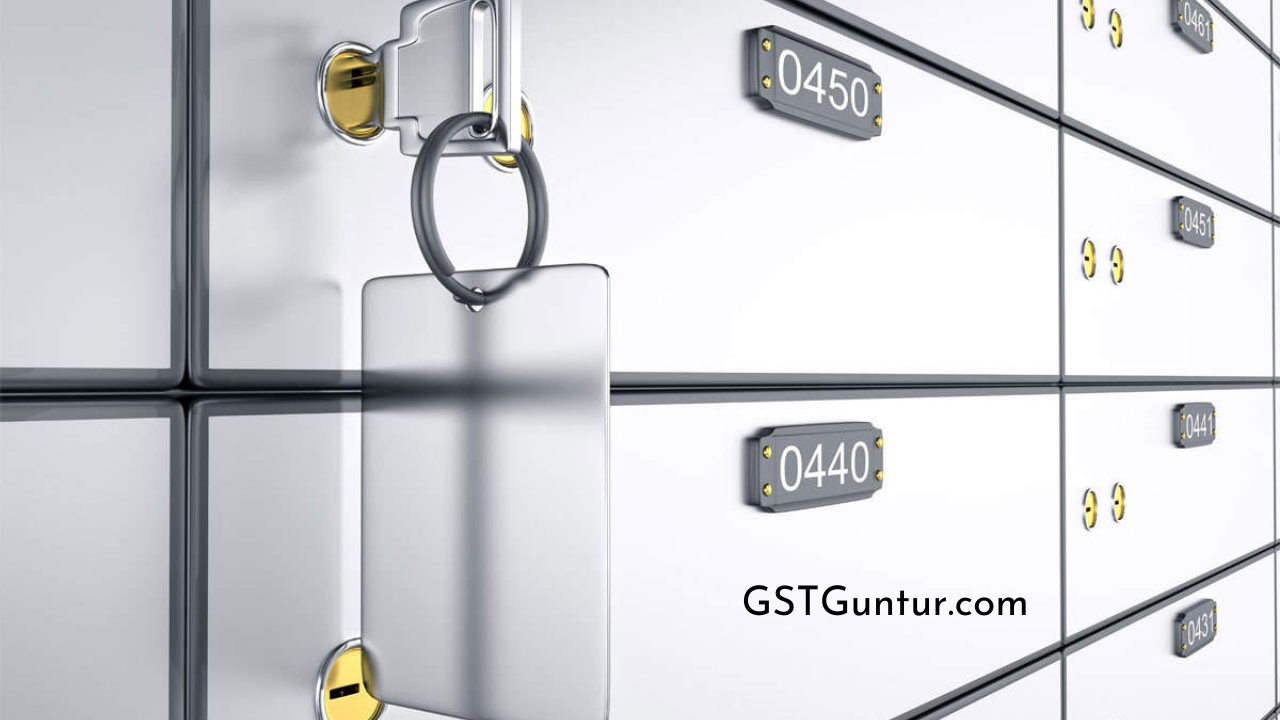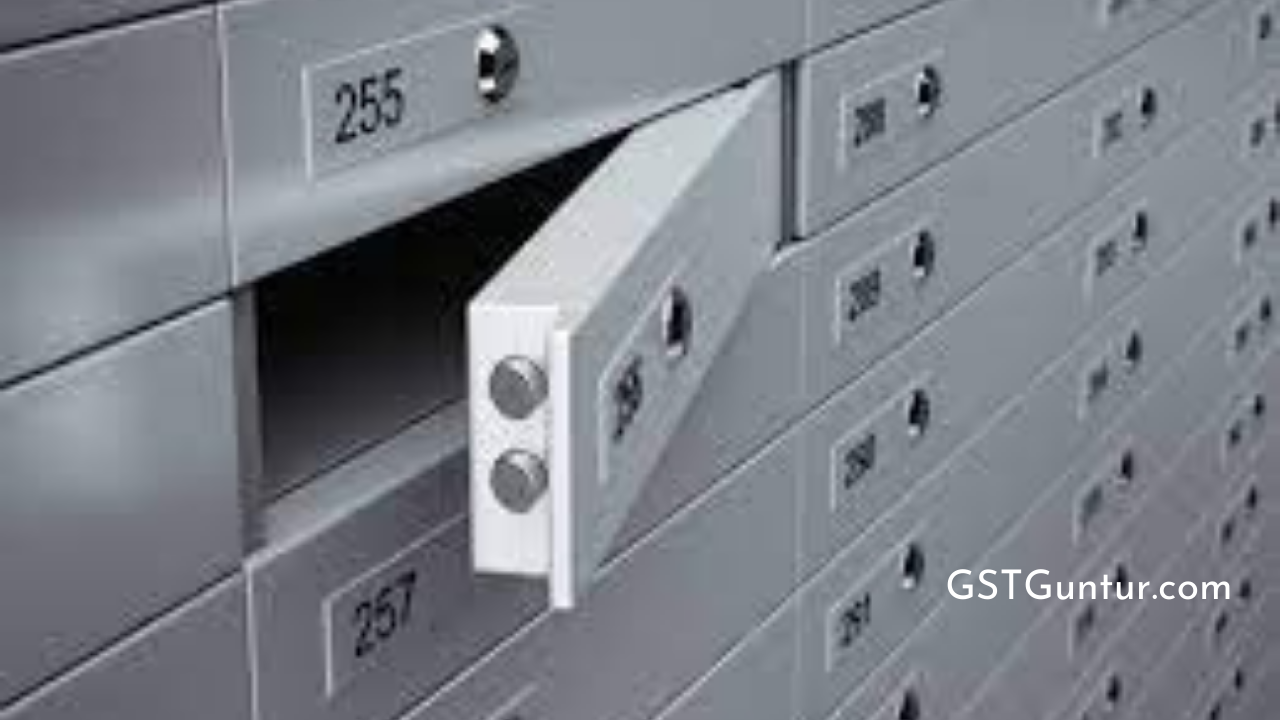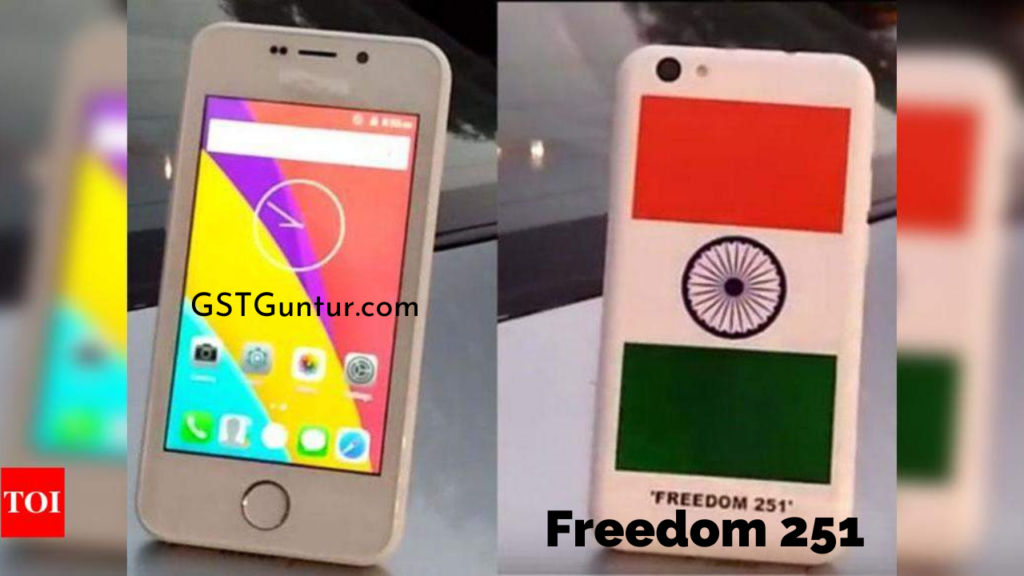GST Input Tax Credit (ITC) | ITC as Claimed Under GST
GST Input Tax Credit?: A tax credit implies that a manufacturer was able to compensate against a tax liability. In other words, the taxpayer is given an opportunity to skip a particular portion of the amount of tax he owes to the concerned authority.
What exactly is the Input Tax Credit or the ITC?
An input tax credit is a phenomenon that permits the taxpayer to reduce a certain amount of tax payable on the inputs with respect to the tax paid on output.
The taxpayer will be eligible to deduct and claim Credit for the amount of the input tax in the course of settling the output tax. To put it in simple words, if any supply of services or goods is offered to an individual who is considered for taxation, the GST imposed is termed as the Input Tax.
What are the SGST, UTGST, CGST and IGST
The State Goods and Services Tax commonly referred to as the SGST, is the taxation system that is categorized under the individual state governments. Therefore, sales or purchases carried out within the jurisdiction of a state are liable to implementing the SGST.
The rate of SGST is the same as that of the CGST and applied simultaneously with it.
The Central Goods and Services Tax, commonly referred to as the CGST, is a tax issued by the government regarding indirect tax.
It is an intrastate tax, i.e., it is liable for transactions within the boundaries of a particular state.
The central government depository is responsible for the collection of the tax amount under CGST.
The CGST is levied in place of other previously implemented taxation systems under the government, which include the-
- Central Excise Duty,
- Service Tax,
- Duties of CustomS
The UTGST or the Union Territory Goods and Services Tax (UTGST) is almost synonymous with the State Goods and Services Tax.
However, there is one difference- the tax collected is delivered to the depository of the government of the union territories, which is the location of the use of the service or the goods which have been assessed under the tax.
UGST is charged under equal rates as that of CGST. It is assessed together with the CGST. However, one should note that only the UGST or the SGST are issued one at a time along with the CGST.
The Integrated Goods and Service Tax or the IGST is a taxation system applicable for interstate transactions.
The main difference it has with the other tax systems is that contrary to IGST, all the other taxes are intrastate.
The IGST rate is roughly an estimated equal to the sum of the CGST and the SGST rates.
Which Category Of Individuals Fall Under Input Tax Credit Scheme?
Adhering to the rules as specified in Section 18(1) of the CGST Act, 2017, the following group of individuals are considered under the Input Tax Credit scheme-
- The clause under Section 18(1)(a)) mentions that any person or company who had an existing business before the implementation of the GST and who are required to enrol for GST
- The clause under Section 18(1)(b) mentions that an individual who willingly opts for registration choice
- As per Section 18(1)(c), any person who stops paying tax under the composition scheme and opts for the standard system of taxation
- Under Section 18(1)(d), any transactions which were previously categorized under exempt supply converts to a taxable supply
Any licensed individual shall be entitled to take credit for input tax charged on any supply of products or services used or intended to be used in their company centred on some of the tax-paying records mentioned below:
- A tax invoice has been released.
- Notice of debit
- Bill of entry
- Invoice produced on a reverse charge basis.
- Input Service Distributor issues a document for credit delivery.
Therefore, ITC charged in one state should not be identified with an available individual’s organization in another state, despite the fact that the individual in question is the same person considered for taxation.
Persons That Are Not Eligible for the Input Tax Credit
- Individuals who have not been registered under the GST scheme
- Those who have enrolled themselves for the composition scheme
The Time Deadline To OPT for Input Tax Credit
- Suppose a person has applied for registration or is liable to register or is granted registration. In that case, the concerned person can claim the Input Tax credit from the immediate day when he is liable to pay taxes.
- When a person takes voluntary registration, his claim for ITC starts from the registration day itself.
The input tax credit will be inquired for the previously mentioned circumstances only if it doesn’t surpass one year from the tax invoice date of issue relating to supply.
In all other instances, ITC must be asserted prior to the earliest of the following-
- Furnishing of yearly return or
- Deadline of documenting the month-to-month return (GSTR-3) for the following monetary year’s September month
Prerequisites for Claiming the Input Tax Credit
- The consumer must have paid the invoice’s sum, as well as the taxes, to the provider of goods or services, or both, as the situation demands, within 180 days of the invoice’s issue date.
- The tax collected via tax invoice must be deposited into the government’s record by the concerned taxpayer.
- The tax invoice information must mandatorily file the GST return.
- In case the tax payable or taxable value listed in the invoice is less than the tax payable or taxable value on those goods, the seller must essentially give a debit notice to the receiver.
- Bill of entry.
- A credit note or invoice needs to be issued by the ISD (Input Service Distributor) as indicated by the GST invoice guidelines.
- An invoice must be given similar to a bill of supply alternatively to a tax invoice in some circumstances. If the sum is less than INR 200, or if the reverse charges are valid under GST legislation, this is applicable.
- According to the GST invoice law, a supplier submitted a bill of supply for goods and services or both.
The Following Situations Do Not Qualify for an Input Tax Credit under section 17 (5).
- The application of motor vehicles and other modes of transportation is prohibited under GST: The ITC on motor vehicles paid will not be compensated against the output tax duty under the GST Law. As such, you will not have the option to claim the Credit for your vehicle or other means of transportation.
- Membership in a club, fitness club, or wellness center: If you have prepaid for an exercise pass, yoga classes, or association in a club for a sport or other practice, you will not stand for the ITC credit.
- Travel opportunities offered to employees in the form of Leave or home travel concessions: In the event that you have booked any travel package, you won’t guarantee ITC the payment of the travel package. Be that as it may, suppose you booked the travel package for business purposes, claim of ITC would be permitted.
- Goods, services, or a combination of the pair that are accepted for private purposes: The ITC isn’t qualified whether the items or offices are utilized for individual use. ITC is just accessible where taxation is charged or charged on the outside conveyance of merchandise or administrations, as per the law’s essential guidelines.
- Circumstances when contract services are granted for constructing a mobile house: This is possibly the most controversial aspect of ITC. Taxpayers and the IRS have long had a dispute over job contract suppliers. Regardless, the works contract issue has relatively brought under control after the implementation of the GST norms.
- ITC with respect to the Composition Levy: The ITC isn’t material on items or regimes on which the composition distributor has already paid tax.
- ITC on lost, stolen, burnt, written about things or given away as presents or free specimens: ITC would be useless to claim ITC if the objects were lost, broken, or destroyed, or in case they were distributed as free samples.
- ITC with respect to real estate developer-supplied goods or facilities: Goods or services except the required machines obtained by an available individual for the construction of a fixed property on their own, even where those products or services (or both) are utilized in the course or assistance of activity, do not qualify for ITC.
- In the case of a nonresident person who is considered for taxation, an ITC is available: ITC will not be qualified if the nonresident taxing person acquires any goods or services. On the off chance that an NRTP obtains any goods or services, nonetheless, they will be liable for the ITC. Furthermore, the IGST rate applies to all imports and exports.
- ITC claim for food and beverages, outdoor catering, health care: Food and beverages, outside cooking, magnificence medicines, dental consideration, and corrective and plastic medical procedures would not qualify for the ITC. Be that as it may, the ITC is appropriate whether an authorized resident requires an interior supply of items, services, or both to make an available outer stock of similar sort of merchandise, services, or both, or as a feature of a taxable scheme.
- In the event of deliberate theft: The input tax credit will be ineligible in the case of fraud.
What is the qualification for the claim of the input tax credit on inputs in funds for a taxpayer in case they opt for voluntary registration?
The individual who obtains voluntary registration is allowed an input tax credit for input tax on stock, semi-finished goods, and finished goods in stock.
The primary condition that needs to be followed is that the goods need to be stored precisely on the day preceding the registration request.

In what Way can one Utilize the Input Tax Credit?
An eligible taxpayer should only practise input Tax Credit obtained from the CGST, SGST, and IGST taxation system to pay separate taxes in a particular way.
- When ITC is obtained from CGST
- The principal inclination is to pay CGST.
- The taxpayer can utilize the excess sum to pay IGST.
- The taxpayer cannot use CGST ITC to pay SGST.
- When ITC is obtained from SGST
- The principal inclination is to pay SGST.
- The taxpayer can utilize the excess sum to pay IGST.
- The taxpayer cannot use CGST ITC to pay CGST.
- When ITC is obtained from IGST
- The principal inclination is for the payment of IGST.
- The next choice is to pay CGST.
- If there is some extra amount, the taxpayer can apply it to pay the SGST.
The ITC has the assumption that only worth additions at various points can be assessed. This essentially excludes the taxation’s cost cascading consequence. Therefore, the input tax credit (ITC) is the very basic building block of the GST management and one of the GST framework’s primary sources.
Explain the phrase the Reversal of Input Tax Credit
The object of credit reversal under GST is the same as it is under the current tax system. In plain English words, credit reversal pertains to the Reversal of an earlier conferred credit.
Reversal of Credit refers to Credit taken out and used when the final product is taxable but is only reversed as the final product becomes excluded.
The Reversal of Input Tax Credit can be claimed as per the following-
- Inability to pay provider within 180 days from the date of invoice.
- Goods and services, whether inputs or capital goods applied for individual purpose.
- Goods and facilities used in the production or provision of exempted goods or services.
- An input tax credit that one earned on the selling of goods or plant and machinery.
- Section 17(5) of the Act also makes a particular group of supplies ineligible.
- Change from a licensed regular dealer to a composite dealer.
Demand for ITC when GST is Calculated on Reverse Charge
The service consumer can claim Input Tax Credit on the tax balance paid under reverse charge on goods and services. The only GST ITC law is that the products and services must be used or benefited by the company or organization which is taking part in the transactions.
In the event that the composite distributor is dependent upon the reverse charge system, the person would be ineligible to get any ITC.
The concerned authorities would collect the tax at the ordinary rates, not the composition rates.
ITC as it relates to Capital Goods and the Reversal of sale
It is feasible to make it beneficial; tax credit for capital products can be adjusted with one installment.
On the off chance that the individual has declared depreciation under the Income Tax cat pertaining to the GST section, an input tax credit for the part included for taxation of capital products isn’t allowed.
An individual may request deterioration on the expense bit or take a GST input tax credit on the capital products in different terms.
In the event that an available individual purchases capital products on which an ITC was asserted, the concerned taxpayer is fitted to meet GST needs at a higher rate from the accompanying sources:
- ITC acquired those capital goods at a 5% discount from the invoice cycle per quarter or half-year.
- GST average compounded by selling price of the capital goods
When refractory bricks, moulds and dies, jigs and fixtures are sold as waste, the taxable individual may be required to pay tax on the transaction value of the product.
Refund of Input Tax Credit under GST Taxation System
Refund of Input Tax Credit under GST comes in three patterns, i.e., there are three possible scenarios in which a taxpayer has deemed fit to demand the ITC refund in their electronic credit/cash ledger.
The three circumstances in which taxpayers will seek an ITC-refund are as follows.
- Refund of unspent Input Tax Credit (ITC) on record of Exports without the adjustment of integrated tax.
- Refund of unspent Input Tax Credit (ITC) in case of goods or services provided to SEZ Unit/ SEZ Developers without advancing integrated taxes.
- Refund of unutilized ITC on account of accumulation due to the reversal tax structure, where the input tax exceeds the outward tax liabilities.
Procedure to claim Credit when the Tax Has Been Paid Under Reverse Charge Mechanism or the RCM
When tax is charged on a reverse charge basis, the taxpayer may claim an input tax credit in the same month as the bill, providing the following requirements are met:
- (1) Liability has been settled through modes of cash
- (2) Goods or service has been essentially utilized for business transactions and purposes
- (3) Self-invoicing has been implemented on such transactions since an unregistered supplier can issue no tax invoice under this scenario
What is the course of action or the recovery mechanism for wrongly claimed Credit by a taxpayer?
The concerned authorities would recover the wrongly availed Credit from the registered taxable person as per the guidelines mentioned in section 73 and 74 of the CGST Act.
Filing of return
To claim or refund the Credit of ITC, a registered person has to mandatorily file the return under section 39 of the Income Tax Act.
In a situation where the depreciation is asserted on the tax portion, claiming ITC would be ineligible.
In case a particular registered taxpayer has asked for depreciation to be implemented on the price of capital goods under the guideline’s ad mentioned in the Income Tax Act of 1961, the ITC claim on the part that is considered for taxation would be denied.
Consequently, we may conclude that the government would not permit any taxpayer with a double profit on the tax elements.
According to the rules laid down by the government, a taxpayer cannot demand both depreciation and ITC under GST law to be calculated on a segment included for taxation.
This implies that the registered taxpayer has two options from which they can opt for only one
- Demand depreciation on the tax part
- ITC on the tax levied
No taxpayer can avail both the options as mentioned earlier simultaneously.
